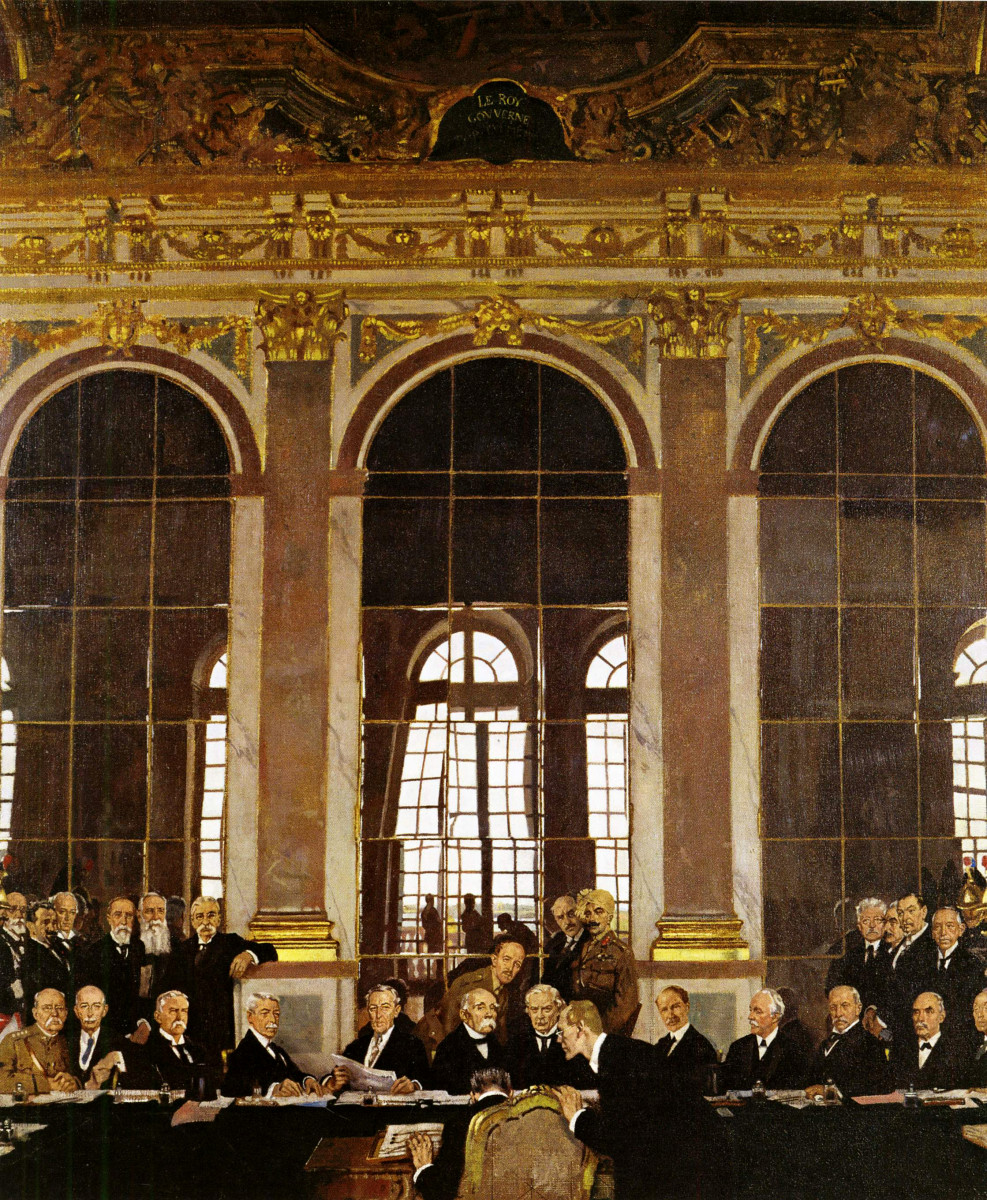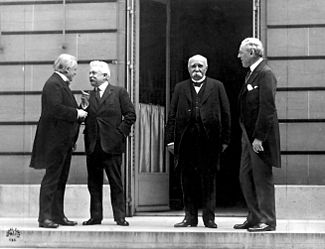The Treaty of Versailles: 100 Years Since
May 22, 2019

Introduction
The year 2019 marks the centenary of the Treaty of Versailles being written, signed, and rejected by the U.S Senate. These events also coincide with the end of World War 1.
Named after the palace and town that it was signed in, the Treaty of Versailles outlined the peace agreements between the allies and Germany. The treaty reveals the ideals of victory, peace, and justice of the countries that were most responsible for crafting it.
Continue reading for a historical look at the writing, reception, and legacy of the Treaty of Versailles.
The Writing of the Treaty
The Paris Peace Conference
 The Paris Peace Conference, met in January 1919 at Versailles. The purpose of the conference was to detail the terms of peace after the end of World War 1.
The Paris Peace Conference, met in January 1919 at Versailles. The purpose of the conference was to detail the terms of peace after the end of World War 1.
Technically, 30 nations were represented, but the "Big Four," Italy, France, the United Kingdom, and the United States, dominated the proceedings. The defeated Central Powers were not included in discussions, and Russia, an original ally, was excluded as the European system did not recognize the Bolshevik government in power following the revolution of 1917.
Italy was represented by Vittorio Orlando, the United States by Woodrow Wilson, the United Kingdom by David Lloyd George, and France by Georges Clemenceau.
Each country had different priorities for the Peace, some of which were in conflict. For instance, the U.K and France desired punitive measures against Germany, while Woodrow Wilson preferred his more lenient 14 points.
By the end of the conference, the Treaty of Versailles had been crafted.
The Treaty of Versailles
In accordance with French and British designs, the treaty inflicted harsh revenge on the Germans. The Germans were mandated to relinquish 10% of their continental land, and the entirety of their overseas empire. In addition, the harbor of Danzig and the mineral-rich Sarland under the control of the League of Nations. The German military was limited in size, and allowed for the trial of the former Kaiser Wilhelm II as a war criminal.
The treaty also placed exorbitant reparation bills on the Germans totaling 32 billion U.S dollars.
The Reception of the Treaty of Versailles in the United States
While the Treaty was signed by the rest of the Big 4, President Woodrow Wilson had to get the approval of the United States Senate. Public opinion strongly supported the ratification of the Treaty in its entirety. However, the Senate was in staunch opposition as they felt membership in the league of nations relinquished the war power of the United States government to the League's Council.
In the final vote on March 19, 1920, the treaty missed ratification by 7 votes. Subsequently, the U.S government signed the Treaty of Berlin with Germany, and never joined the League of Nations.
Legacy of the Treaty
The terms of the Treaty of Versailles devastated the German economy. Tensions mounted between Germany and its European neighbors as they attempted to aggresively enforce the terms of the treaty. Many of the German government officials who signed the treaty were assassinated.
Germany broke many of the disarmament requirements of the treaty in the 1920s, and Hitler renounced the treaty completely in 1935. From 1937 to 1939, Hitler violated the territorial rules of the treaty in regards to Austria, Czechoslovakia, and Memel, with the indirect permission of the allied powers.
After World War II, Britain and the United States attempted to avoid many of the mistakes made in the Treaty of Versailles and attempted to integrate Germany into the international community via generous rebuilding of Western Germany. Interestingly, no official peace treaty was ever signed to end World War II.